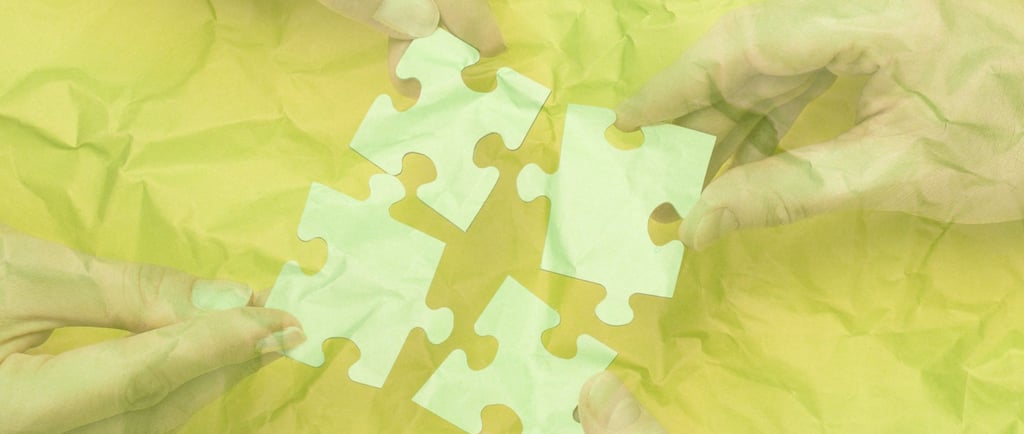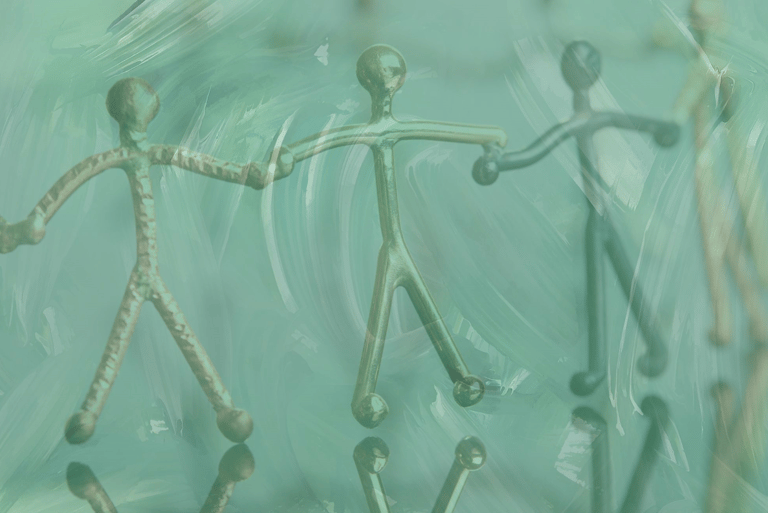Build a long-lasting circular economy through collaboration
A circular economy that truly works and moves us towards a more sustainable world is created through connection and collaboration. It can’t be done alone.
Sinead O'Carroll
10/26/20244 min read


Build a long-lasting circular economy through collaboration
There’s no doubt, a successful circular economy is built on ground-level communication, connection, and collaboration.
I’ve always believed that change is much more possible, fast-moving, and efficient when it comes from the top, from the people and organisations in power.
But the sad truth is today’s world brings little hope of positive climate action from those in charge.
We’re caught up in a world of unsettled governments led by politicians with questionable priorities.
Fortunately, this doesn’t mean all is hopeless.
If you come across a tree in the road while trying to escape your city following severe flood warnings, you do all you can to find another way around. - A real risk many communities are facing today.
And that’s what we, the people who understand and care, will do. Find another way.
One of the most notable setbacks in the global fight against climate change was Trump’s decision to withdraw the U.S. from the Paris Agreement, a move that horrified most Americans, and all environmentalists around the world.
But it didn’t turn out quite as bad as people had feared.
In an attempt to find a way around this major roadblock, a number of US state governors established the US Climate Alliance to uphold the goals of the Paris Agreement at the state level, despite the country’s departure.
Our leaders aren’t guiding us out of this undeniable issue we’re facing, so let’s come together at the ground level to find another route. It will be a more difficult road. And the journey is likely to take longer, but we can’t just sit and wait for the flood to come.
Connection to create a circular economy
Collaborate with other businesses
To shift towards a circular economy, businesses must work together - from one-person start-ups to multinational corporations.
Sharing knowledge, resources, and innovations will help build an ecosystem within the business world that benefits everyone.
We often say two heads are better than one, and this applies to companies too.
Many businesses work hard to create a community culture, which has some wonderful benefits. However, it can also keep a whole team moving in one direction, potentially missing innovative detours.
Sharing knowledge and ideas with other types of thinkers can unlock opportunities otherwise not possible.
Building real relationships with other businesses isn’t just great for sharing knowledge. We can share resources too!
One person’s trash is another person’s treasure.
What’s going to waste in your business? Reframe it. Think of it as a resource. Can you find a way to bring it back into your business? If not, what other type of business might benefit from it?
Now, think about the resources you need that could be someone else’s waste.
Partnerships between companies can pave the way for more sustainable production methods, drastically reduce waste, and amplify the overall impact of circular practices.


Collaborate with customers
If you know your stuff, you’ll know that good customer retention almost always trumps great customer acquisition.
It costs money to get customers, but it just takes respect to keep them. You’ve got to care about what they care about.
In relation to the circular economy, this could mean offering your customers the option to shop sustainably. It could look like repair services, refill options, buy-back programs, or product leasing models, all of which can foster long-term relationships with customers.
Collaborate with suppliers
Service providers and suppliers are critical links in the circular economy chain.
Have conversations with them. Find out if there’s a better way. By understanding each other’s needs and capabilities, you create the chance to discover new opportunities.
Businesses need to work closely with suppliers to source sustainable materials, reduce waste, and ensure that products are made to last.
Transparent, collaborative relationships can help create more efficient systems that benefit both sides.
Collaborating with local business groups and associations
In the journey towards building a circular economy, joining local, national, and even international business networks has huge advantages. By collaborating, businesses can share resources, pool knowledge, and drive systematic, and even legal, change.
Working with local groups also helps businesses align with and support regional sustainability goals. These networks often provide access to training, tools, and funding opportunities for green initiatives.
And it can be a win for company growth too, customers appreciate seeing businesses involved in their local community, working together for a greater cause.


A circular economy isn’t only good for the environment; it drives innovation and resilience, leading to stronger, more successful businesses.
By working together, we can build a future where resources are used wisely, waste is minimised, and sustainable practices become the norm.
A circular economy is a team sport. Grab your kit.
If you're ready to take your content to the next level, consider partnering with a copywriter who shares your passion and understands the importance of authenticity.
If you feel your business matches the vibes I’m putting out, contact me today to learn more about my copywriting services and how I can help your business grow while staying true to your values.
